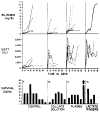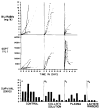Canine and human liver preservation for 6 to 18 hr by cold infusion
- PMID: 339435
- PMCID: PMC3008806
- DOI: 10.1097/00007890-197712000-00001
Canine and human liver preservation for 6 to 18 hr by cold infusion
Abstract
Forty-one dog livers were preserved with cold, lactated Ringer's, plasma, or intracellular (Collins) solutions. Consistent survival was obtained with all three solutions for 9 hr. After 18 hr, the plasma and Collins solutions permitted survival, with the Collins solution having a slight overall advantage. The method using Collins solution has been used to preserve seven human livers in Los Angeles, to transport the organs to Denver, and to transport them as orthotopic grafts from 6 hr, 45 min to 10 hr later.
Figures



References
Publication types
MeSH terms
Substances
Grants and funding
LinkOut - more resources
Full Text Sources
Other Literature Sources
